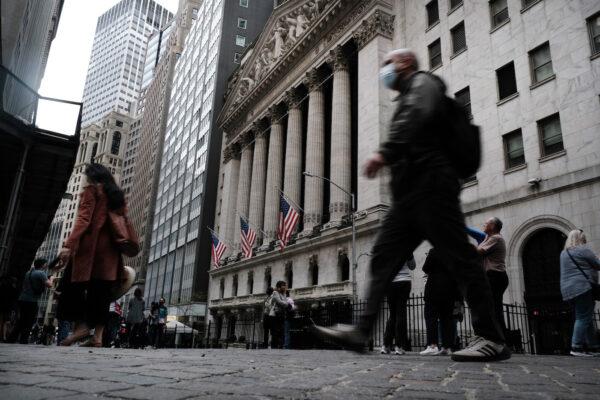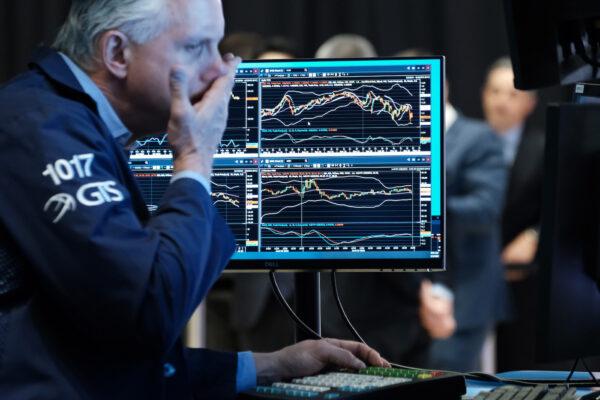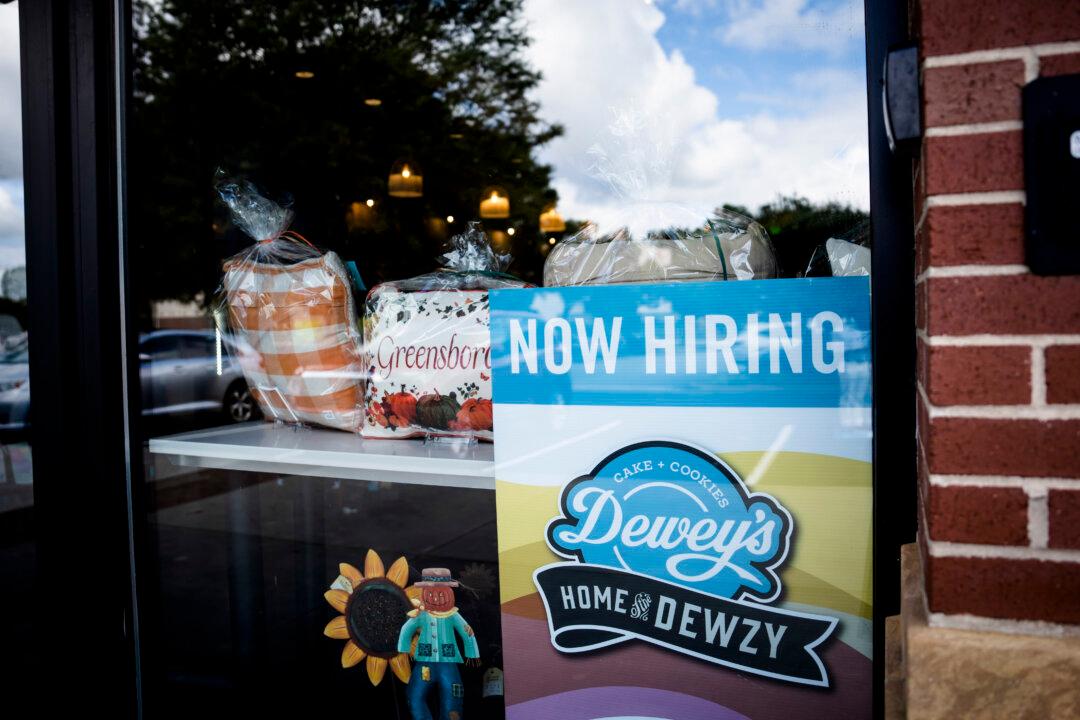Sentiment among Wall Street investors weakened in April following a slump bump in February and March, according to a new Goldman Sachs poll.
The Global Markets Division’s Marquee QuickPoll of institutional investors reported that the net sentiment of institutional investors toward risky assets fell below minus 50 percent. The monthly survey has been steadily declining since hitting a peak in early 2021.
Investors are also worried about a recession, the survey shows. Two-thirds of investors anticipated a recession before the end of 2023, up from 56 percent in April. They believe that an economic downturn is necessary to help inflation normalize.
The one sector that institutional investors are most bearish in is tech. A total of 62 percent think the industry could tumble by another 10 percent.
This week, the tech-heavy Nasdaq Composite Index slipped into a bear market, plunging by about 22 year-to-date.
Thus far this year, the Dow Jones Industrial Average has slumped by 9 percent, and the S&P 500 has tumbled by nearly 13 percent.
Still, there’s some suggestion that a market could transition into a rally because of investor positioning, according to Oscar Ostlund, head of content for Marquee, the digital platform for the Global Markets Division.
The survey, which was conducted before this week’s Federal Open Market Committee (FOMC) policy meeting, also shows that 54 percent believe other investors are too bearish. But many are still concerned about a recession, driven by inflation and the military conflict in Eastern Europe.
Moreover, an Allianz Life Insurance Company first-quarter market perceptions poll reported that more than half (56 percent) of participants are fearful of a market crash.

In the United States, short-term investor optimism is quite strong, rising to 58 percent. However, only 33 percent plan to invest in the next six months, with the war in Ukraine and inflation being their chief concerns.
“Investors globally are clearly concerned about the personal and economic impacts of one of the largest humanitarian crises in decades,” Iqbal Khan, president of UBS Europe, Middle East, and Africa and co-president of UBS Global Wealth Management, said in the report.
“The long-term economic implications of the war in Ukraine are difficult to assess, but most investors remain optimistic on their outlook for the stock market and are confident in their well-diversified investment portfolio.”
Earnings season has also been a disappointment, according to Ken Mahoney, CEO and president of Mahoney Asset Management.
“When we come into earnings season limping, we sometimes see companies’ earnings as a potential catalyst to move higher if they beat expectations and raise guidance, but this has not been the case so far,” Mahoney told The Epoch Times, pointing to Amazon as a good example of this.
Year-to-date, Amazon shares are down by more than 30 percent.
In a recent outlook for global markets, Capital Economics projected additional pain amid the rise in global government bond yields.
“Yields have typically peaked only shortly before the ends of central bank tightening cycles and we doubt this one will be different. We expect this, as well as the threat of slowing growth, to keep risky assets, such as equities and corporate bonds, under pressure until around the middle of next year.”
However, “financial markets could eventually bottom out once the monetary tightening cycles reach their conclusions,” Capital Economics stated.
The U.S. Treasury market has surged this year, with the benchmark 10-year yield topping 3.1 percent on May 6.
Waning market optimism is understandable when inflation surges, growth slows down, and interest rates climb higher across the globe, according to Brunello Rosa, CEO and head of research at Rosa & Roubini, a consultancy firm.
“It’s clear that all of them [central banks] are talking tough at this stage. But the reality is that lots of tightening will eventually lead to economic contraction. In the eurozone and in the U.S., they are nowhere near realizing that actually there will be some form of contraction of economic activity.”

Market expectations for stagflation or recession have accelerated in recent weeks amid the first-quarter economic contraction of 1.4 percent and mixed economic data.
Stagflation is when the economy stagnates, inflation soars, and joblessness grows. A technical recession is two consecutive quarters of negative gross domestic product growth.
But there’s debate if the Federal Reserve can achieve a soft landing—facilitate economic growth, curb inflation, and maintain low unemployment—in the economy as the institution raises interest rates and trims its $9 trillion balance sheet.
Early forecasts suggest that the economy could rebound in the second quarter.





